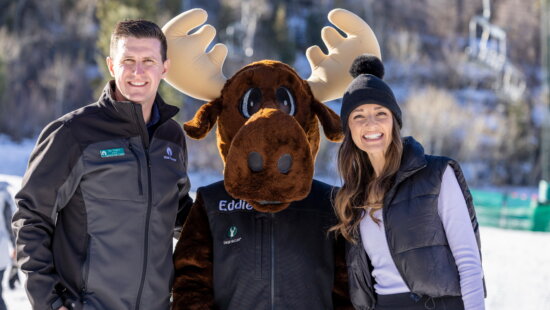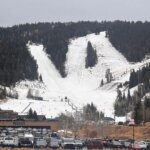Snow
Inside Deer Valley’s snowmaking revolution: How Utah’s most advanced system will blanket its historic expansion

Construction on the East Village in full swing this July. Photo: Deer Valley Resort
PARK CITY, Utah — On a recent private tour through Deer Valley Resort’s new East Village, the future of skiing looked a lot like a construction site. Dirt roads twist through mountainsides where chairlifts will soon rise; excavators hum beside future lodges; and at nearly every turn, crews are trenching, welding, and burying snowmaking pipe. The sheer scale of the project—spanning thousands of acres—is staggering.
From a distance, the new terrain looks like a patchwork of graded slopes and lift towers. Up close, it’s a high-tech blueprint in motion: four new pump houses, 80 miles of snowmaking pipe, and more than 1,000 automated snow guns coming together to power one of the the most sophisticated snowmaking systems in the world.
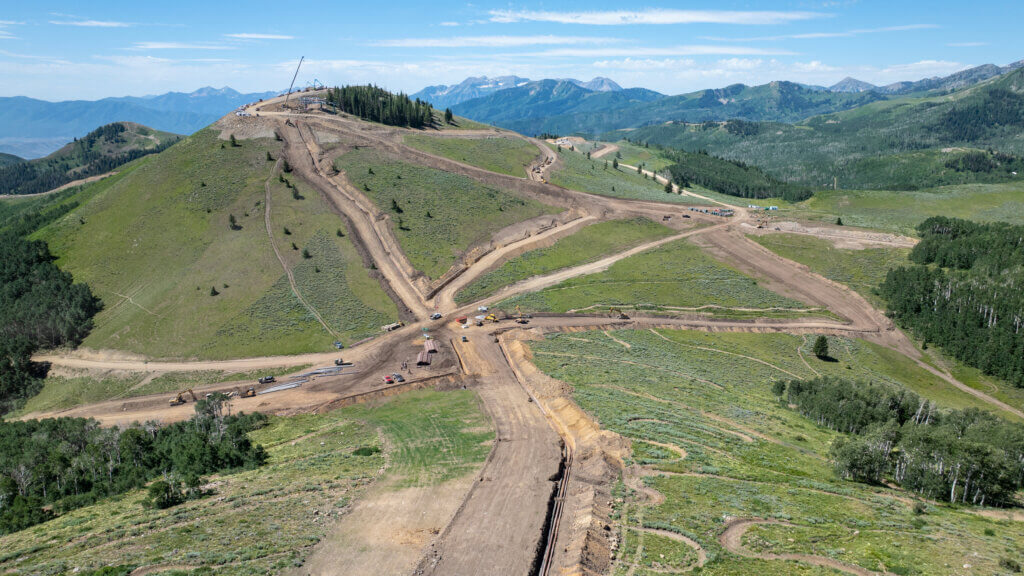
When the 2025–26 season begins, Deer Valley will unveil the largest expansion in ski industry history, more than doubling its size to 4,300 acres with 31 lifts and 202 runs. But what really sets this project apart, says Senior Snowmaking Manager Brett Hawksford, isn’t just the size of the mountain—it’s the precision and responsiveness of its snow.
“Every gun, valve, and pump can be controlled remotely and calibrated in real time,” Hawksford said. “Once the system is fully online, we could cover the mountain from bare trails to Deer Valley-perfect corduroy in about a week—if the weather cooperates.”
Engineering winter, one pipe at a time
Building that capability has been a monumental feat. Crews from a Vernal-based contractor more accustomed to oil and gas pipeline work have spent months installing the resort’s 80 miles of steel and HDPE pipe—plus thousands of electrical and communications lines for the system’s 1,200 snow guns.
“It’s incredibly labor-intensive,” Hawksford said. “They’re experts in big pipe work, but this adds layers of complexity—laterals, wiring, control systems. Every tower gun, every fan gun has its own network connection. There’s a lot going on underground that skiers will never see.”
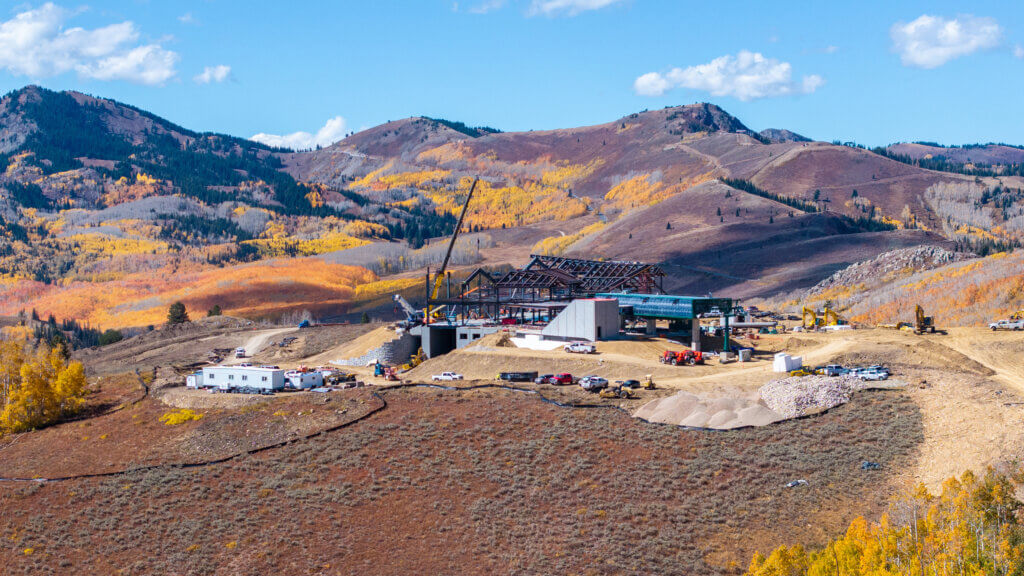
When complete, the system will include:
- Four automated pump houses capable of distributing up to 15,000 gallons of water per minute and 32,000 cubic feet of compressed air per minute.
- 13 valve houses strategically located for efficient pressure management.
- 1044 low-energy snow guns and 155 fan guns, almost all fully automated.
The heart of the system lies in a series of new pump houses—one at Ventana, near Highway 40, drawing from a 600,000-gallon tank supplied by the Jordanelle Special Service District. A future 10-million-gallon reservoir is planned nearby, pending final approval from Utah’s Dam Safety Board.
“With the full system in place, we could run every gun on the mountain at once,” Hawksford said. “At 24 degrees wet-bulb temperature, that’s full power—essentially creating winter overnight.”
A precise, adaptive snowmaking grid
While the system is largely automated, Hawksford said the human element remains vital. About 200 of the resort’s older “stick” guns still need to be adjusted manually for wind and direction, and snowmaking crews will continue to fine-tune coverage to match Deer Valley’s famously smooth conditions.
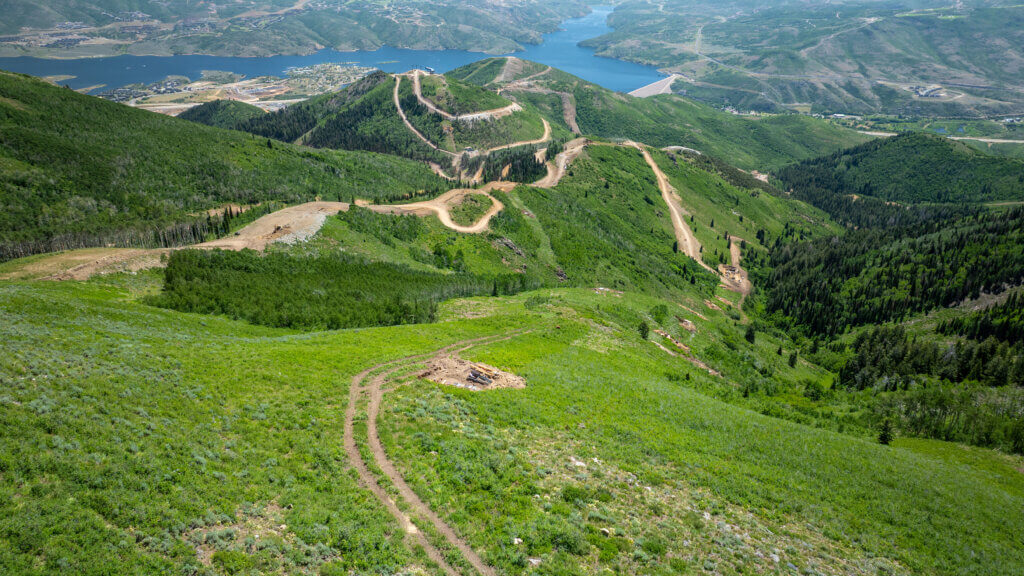
“It’s almost fully auto, but we’ll always have boots on the ground,” he said. “We can start or stop a trail from a computer, but our team is out there adjusting angles, checking coverage, and moving portable guns when needed. It’s a lot of coordination, especially early season.”
The advantage of a fixed, fully networked system, Hawksford explained, is flexibility. “We can target the upper half of a trail if the lower section is already deep, or fire up a windy ridge during a calm window. It means we can maintain consistency all winter, even reopening sections at night without closing runs during the day.”
Building the future of snow
The snowmaking project is part of Deer Valley’s “Expanded Excellence” initiative, a multi-year investment that includes the resort’s East Village base area, a reimagined Snow Park, and a new network of high-speed lifts—among them, the flagship East Village Express Gondola, a 10-passenger system connecting East Village to Park Peak in 15 minutes.
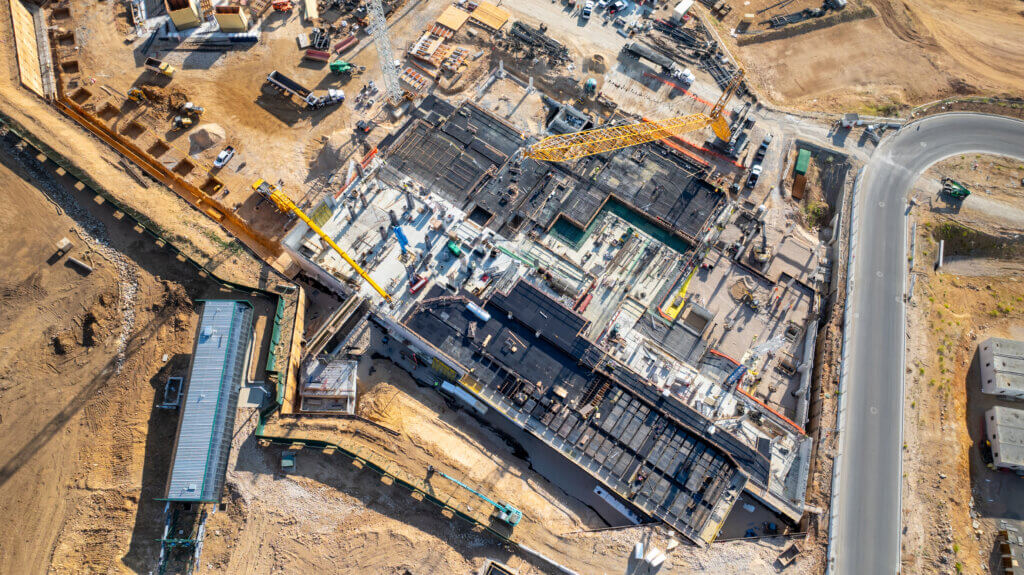
Construction crews, snowmakers, and engineers have been working around the clock to prepare the new terrain for its debut this winter. Hawksford said the scope of collaboration has been one of the most impressive aspects of the project.
“It’s taken an army to pull this off,” he said. “From welders and electricians to snow gun manufacturers and our own team—it’s been a massive group effort. Everyone understands what this means for the future of Deer Valley.”
Guaranteeing the perfect start
For a resort famous for its immaculate grooming and reliability, the expanded snowmaking network is more than a technical upgrade—it’s a guarantee. The new East Village terrain sits at lower elevations than much of Deer Valley’s original footprint, making consistent early-season snow critical for meeting target opening and closing dates.
“Without a system like this, we couldn’t promise the kind of experience people expect from Deer Valley,” Hawksford said. “This gives us that confidence—and the flexibility to keep the mountain in perfect shape from November through April.”
When the lifts start spinning this winter, this phase of the transformation will be complete. What now looks like a maze of pipes and trenches will become the polished backbone of a next-generation ski experience—bigger, smarter, and ready to make its own snow-covered reality.
















